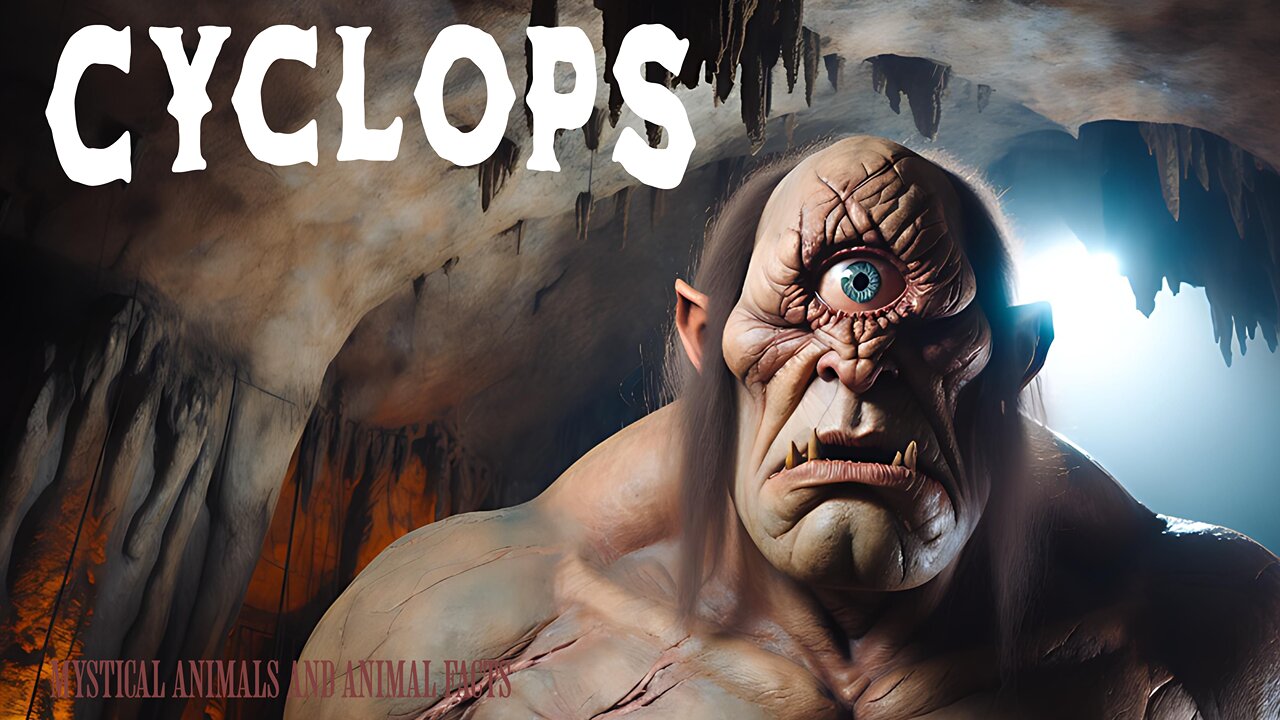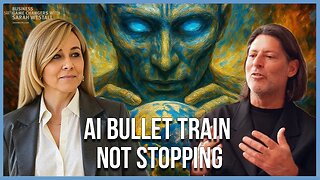Premium Only Content

Cyclops A one-eyed mythical creature from Greek mythology - Mini-Documentary
Shirts and more
Designs Redbubble
https://www.redbubble.com/people/ReneMM/shop?asc=u
Spreadshirt.at
https://www.spreadshirt.at/shop/user/renemm/?srEdit=pa#?affiliateId=1257693
Spreadshirt.com
https://www.spreadshirt.com/shop/user/renemm/?srEdit=pa#?affiliateId=11625
Shirtee.at
https://www.shirtee.com/de/catalogsearch/result/index/designer_id/112048/all_stores/
1/
The Cyclopes are important beings in Greek mythology, whose origins lie in the earliest written traditions. In his Theogony, Hesiod names three original Cyclopes, Brontes, Steropes, and Arges, as sons of Gaia and Uranus. They are described as powerful beings with a single large, glowing eye in the middle of their foreheads. Uranus feared their power and threw them into Tartarus, where they were later freed by Cronus but held captive again until Zeus finally freed them. As allies in the battle against the Titans, they played a decisive role by forging Zeus' thunderbolts, giving Poseidon his trident, and making Hades' cap of invisibility. These three Cyclopes embodied specific aspects of the forces of nature: Brontes, the thunderer; Ster opes, the lightning god, and Arges, the shining one. They were considered master craftsmen and smiths of divine weapons and artifacts, whose workshops were often associated with volcanic fires. Homer's portrayal in the Odyssey differs significantly from this. Here, the Cyclopes appear as completely uncivilized giants without laws, agriculture, or social order. They live as primitive shepherds in caves on remote coasts, each self-sufficiently for his family and herds, without any sense of community or respect for the gods. Homer describes Polyphemus, the son of Poseidon, as the prototypical representative of these wild giants, whose cruel behavior and brutal strength pose an existential threat to Odysseus and his men. The monumental structures of the Mycenaean period, especially the walls built from huge unhewn stone blocks, such as those found in Tiryns or Mycenae, were later described as cyclopean. This archaeological term derives directly from the belief that only superhuman beings such as the Cyclopes could have moved and built such gigantic stones. These walls served primarily for defense and demonstrated the power of the rulers of the time. Their characteristic appearance still shapes the image of ancient sites today. Various theories attempt to explain the origin The obvious assumption is that there is a connection with fossilized elephant skulls, whose large central nasal opening could easily be misinterpreted as a giant eye socket. Such fossils have indeed been found in the Mediterranean region. Another theory refers to the encounter of early cultures with rare medical cases of severe congenital malformations in the facial area, such as cyclopia, where the eye sockets are not separated. Such rare and frightening births may have influenced the creation of myths. In their dual mythological form, cyclops symbolize both the creative and destructive chaotic forces of nature. They represent the untamed, the unpredictable, and that which is superior to humans. The ambivalent nature of these beings, somewhere between divine craftsmen and man-eating monsters reflects the Greek conception of the complex, often contradictory forces that shape and threaten the world. Their depiction in art always shows them with their characteristic single eye, sometimes in archaic form as wild, hairy giants, sometimes more as huge but proportionate blacksmith figures. The Cyclopean walls remain a visible testimony to the influence of these mythological figures on the description and perception of prehistoric construction achievements. Their presence in myths underscores the importance of craftsmanship and artisanal skills even in divine spheres, while their wild Homeric descendants embody the constant fear of the loss of civilization and a relapse into barbarism. The Cyclopes are thus firmly anchored in the cultural memory of the ancient Greek world. They represent fundamental primal and admiration for the inexplicably powerful beyond human control. Interesting mystical beings. I would be very happy to receive a like and a subscription.
-
 4:14
4:14
GritsGG
15 hours ago2 Warzone Easter Eggs! How to Find Them EASILY!
9.79K1 -
 LIVE
LIVE
Lofi Girl
2 years agoSynthwave Radio 🌌 - beats to chill/game to
350 watching -
 1:45:43
1:45:43
Man in America
15 hours agoThe DISTURBING Truth About Parasites — Live Q&A w/ Dr. Jason Dean
76.1K39 -
 7:13:47
7:13:47
SpartakusLIVE
11 hours ago#1 Mountain of Muscle with HUGE Legs saves your weekend from complete BOREDOMNight HYPE
45.3K1 -
 47:42
47:42
Sarah Westall
12 hours agoFreedom or Slavery? AI will Change Everything w/ Trump Senior Advisor Marc Beckman
61.7K14 -
 2:23:20
2:23:20
vivafrei
19 hours agoEp. 285: Visa Revocation No-Go! Sortor Arrested! Ostrich Crisis! 2A Win! Comey Defense & MORE!
119K116 -
 5:55:11
5:55:11
CassaiyanGaming
9 hours ago🟢LIVE - VISITING GOOB LAGOON! - Will They Rip Me Off?!? Waterpark Simulator
44.1K4 -
 5:42:21
5:42:21
EricJohnPizzaArtist
6 days agoAwesome Sauce PIZZA ART LIVE Ep. #64: Robbie “The Fire” Bernstein
49.9K2 -
 2:23:58
2:23:58
Nerdrotic
12 hours ago $20.65 earnedDeDunking the Debunkers with Dan Richards | Forbidden Frontier #119
64.5K15 -
 5:37:53
5:37:53
SlinderPigCamz
10 hours ago $2.16 earnedThe Headliners and other games W/GrinchyGamer101 (Road to 500 Followers)
27.1K
